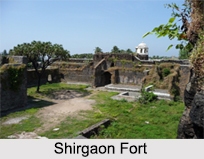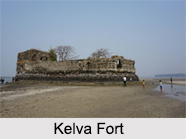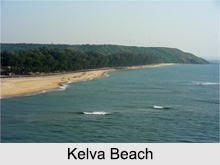 Palghar is a town in Konkan division of Maharashtra state and a Municipal Council, which is located about 87 kilometers north of Mumbai. The town lies on the Western Line of the Mumbai Suburban Railway on the Mumbai-Ahmedabad rail corridor. It is the administrative capital of the newly formed Palghar district. The town is located around 35 kilometers north of Virar and about 24 kilometers west of the Mumbai-Ahmedabad National Highway (NH 8) exit at Manor. Palghar remains a popular weekend getaway town. It is also an emerging town with high growth prospects.
Palghar is a town in Konkan division of Maharashtra state and a Municipal Council, which is located about 87 kilometers north of Mumbai. The town lies on the Western Line of the Mumbai Suburban Railway on the Mumbai-Ahmedabad rail corridor. It is the administrative capital of the newly formed Palghar district. The town is located around 35 kilometers north of Virar and about 24 kilometers west of the Mumbai-Ahmedabad National Highway (NH 8) exit at Manor. Palghar remains a popular weekend getaway town. It is also an emerging town with high growth prospects.
History of Palghar
On 14th August 1942, there was an uprising in Palghar, in which Kashinath Hari Pagdhare, Govind Ganesh Thakur, Ramprasad Bhimashankar Tiwari, Ramchandra Mahadev Churi, and Sukur Govind More were martyrs. The main circle of Palghar is known as "Paachbatti" (five lights) in the honor of these martyrs. The Paachbatti is situated very close to the Palghar Railway Station, which also serves as the Palghar Bus Stand. Hence, 14th August has been declared as "Martyr`s Day" in Palghar. All gather at Paachbatti to honor the five Martyrs who sacrificed their life. On 1st August 2014, Palghar became the 36th district of Maharashtra.
Demography of Palghar
Palghar had a population of 68,930 of which males constitute 36,523 i.e. 52.9% of the population and females 32,407 i.e. 47.1% of the population. Palghar has an average literacy rate of 77.52%, higher than the national average of 59.5%. Male literacy rate is 81.2%, and female literacy is 73.35%. In Palghar, 11.8% of the population is under 6 years of age.
 Economy of Palghar
Economy of Palghar
Economy of Palghar is based on employment in factories and farming. The land surrounding Palghar abounds in human resources - skilled and unskilled. Apart from the government promoted MIDC situated at Tarapur, Palghar is also home to a number of Industrial Townships where there are many small scale industries such as engineering, pharmaceutical, plastics, textile, notebook industries. Maharashtra"s biggest fishing center, Satpati, is located around 8 kilometers from Palghar railway station. There are farms growing chickoos, coconuts, and palm all around the villages of Palghar. Rice is grown on agricultural lands during the monsoon. Most of the rich landlords of Palghar made their money trading grass to the dairies in Mumbai. Grass trading is a major occupation of many families in Palghar. The town is also close to an industrial complex, which is located at Boisar and India`s first nuclear power plant is located at Tarapur.
Tourism in Palghar
Tourist places of Palghar include Manor, Shirgaon Fort, Kelva Beach, Kelva Fort, Ram Temple, Mahim Beach, Sheetla Devi Temple, Chinchani Beach, Satpati Beach, Shirgaon Beach, Kelva Dam etc. Some of the places have been detailed below:
 Kelva Fort: This fort is fortified with intact walls; it has great architectural works in it. This fort was built by Portuguese in 16th century, later it was conquered by Shivaji. The fort can only be visited by climbing the walls. It is said, that the fort was used by Shivaji for defense purposes.
Kelva Fort: This fort is fortified with intact walls; it has great architectural works in it. This fort was built by Portuguese in 16th century, later it was conquered by Shivaji. The fort can only be visited by climbing the walls. It is said, that the fort was used by Shivaji for defense purposes.
Shirgaon Fort: Located close to the Shirgaon Beach, this fort is also said to be used by Maratha ruler, Shivaji. This fort was earlier used to keep a close check on the enemy lines and movement. Although the ancient fort is in ruins, much evidence of the Maratha rule of Shivaji can be seen within the fort and its outskirts.
Mahim Beach: Mahim beach is located near to the region of Palghar, on the Arabian Sea coast. It offers a picturesque view of the Arabian Sea. This beach is mainly popular for the sunset. Near to the beach, there is located the Mahim Fort that was built to defend the invasion of the Portuguese.
Visiting Information
Palghar is well connected via road and rail transport. Palghar acts as a divisional head of MSRTC Maharashtra State Road Transport Corporation. Palghar Railway Station and Chhatrapati Shivaji Airport are the nearest to Palghar. The place can also be reached by road via National Highway 53.



















